Ophiopogon is a member of the Asparagaceae family and is native to the shady forests and woodlands of Japan and Korea, thriving in moist soils and next to streams. Mondo grass is the picture of calm and serenity, and can transform a garden beautifully.
In our how to grow and care guide, we’ll introduce mondo grass in a bit more detail, go through the varieties, the growth, care and propagation of the grass, and of course the pests and diseases that might challenge it.
More...

Genus: | Ophiopogon |
|---|---|
Species: | O. japonicus |
Family: | Asparagaceae |
Common name: | Mondo grass |
Plant type: | Grass |
Soil type: | Well-draining, variety of soil types |
Sunlight: | Full sun to deep shade |
Watering: | Once per week, not drought tolerant |
Propagation: | By division |
Flowers: | Pink, white and purple |
Maintenance level: | Low |
Poisonous to pets: | No |
Introducing Mondo Grass
Mondo grass is also known as monkey grass, a name you won’t easily forget. This evergreen perennial makes a great groundcover or can live on its own as a grass-like plant.
Mondo grass does well in almost any soil and lighting, and this slow growing plant can be easily propagated by division. It needs minimal care once established but won’t cope well without enough water.
This is an attractive landscape plant with many uses. It is not a true grass, although it does have strappy leaves and tends to grow in clumps.
In summer, the grass brightens up the area where it’s planted with lavender or white flowers that eventually become black fruit. This grass are small plants that grow to between 15-25 centimetres. Their clumping nature depends on the variety.
Mondo Grass Botanical Name
Ophiopogon japonicus is the scientific name for mondo grass and refers to the plant’s native region of Asia. The name comes from the Latin words for snake and beard, which refers to the spiky flowers.
This grass is the perfect lawn substitute in shady to partially sunny locations, plus it never needs mowing. Mondo grass spreads by underground stems, and can slowly form dense colonies. The leaves are 1 centimetre wide and glossy green.
Mondo Grass Varieties
There are three main varieties of mondo grass.
- Green mondo grass (Ophiopogon japonicus)
- Black mondo grass (Ophiopogon planiscapus ‘Nigrescens’) - a dwarf cultivar that is between 5 to 10cm tall with black leaves. This grass has small lilac or white flowers.
- Variegated mondo grass (Ophiopogon jaburan ‘Vittatus’) - has green leaves with a vertical white stripe and small white flowers.
There are also many mondo grass cultivars, with dwarf mondo grass (Ophiopogon japonicus ‘Nana’) being one of the most popular.
Compared to other varieties of mondo grass, the ‘Nana’ cultivar is more durable and copes better with foot traffic. Ophiopogon japonicus ‘Nana’ is also the slowest-growing.
Here are a few more cultivars worth mentioning:
Ophiopogon japonicus ‘Kyoto Dwarf’
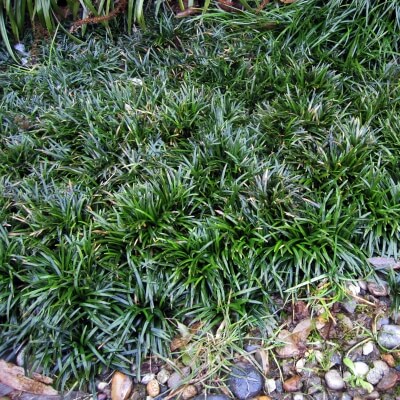
Source: vivaibambustore.com
This is a miniature which spreads to form a dense carpet of dark green leaves, with spikes of lilac flowers. This variety only grows +-5cm tall and has short dark green leaves and tiny white flowers hidden within the foliage.


Get Your Free Guide:
Master Growing Australian Natives eBook
A Must Have Complete Guide for Every Australian Garden
Get Your Free Guide:
Master Growing Australian Natives eBook
A Must Have Complete Guide for Every Australian Garden
Ophiopogon japonicus ‘Silver Mist’
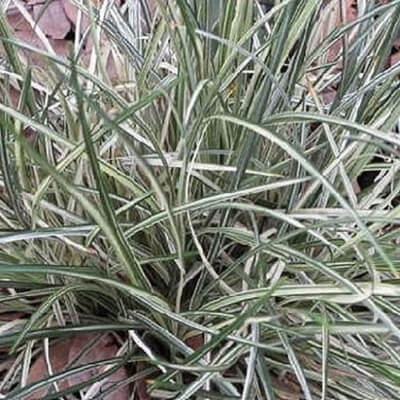
Source: greenleafnurseries.co.nz
Silver mist has narrow dark green leaves with fine white variegations, and pale lavender flowers.
Ophiopogon planiscapus ‘Black Dragon’

Source: cherry-lane.co.uk
This variety has deep purple-black foliage and lilac-pink flowers.
Ophiopogon intermedians ‘Alba Variegata’
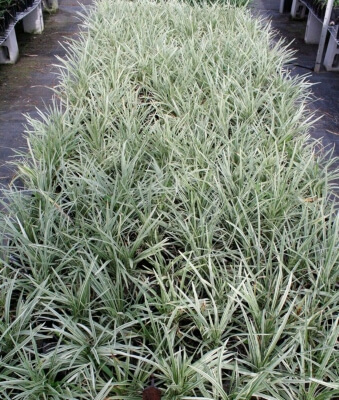
Source: pinemountainnursery.com.au
Alba Variegata has completely white leaves when grown in the sun, but when grown in the shade it produces green leaves with a white edge.
Ophiopogon japonicus ‘Kyoto Dwarf’This is a miniature which spreads to form a dense carpet of dark green leaves, with spikes of lilac flowers. This variety only grows +-5cm tall and has short dark green leaves and tiny white flowers hidden within the foliage. |  Source: vivaibambustore.com |
Ophiopogon japonicus ‘Silver Mist’Silver mist has narrow dark green leaves with fine white variegations, and pale lavender flowers. |  Source: greenleafnurseries.co.nz |
Ophiopogon planiscapus ‘Black Dragon’This variety has deep purple-black foliage and lilac-pink flowers. |  Source: cherry-lane.co.uk |
Ophiopogon intermedians ‘Alba Variegata’Alba Variegata has completely white leaves when grown in the sun, but when grown in the shade it produces green leaves with a white edge. |  Source: pinemountainnursery.com.au |
Growing Mondo Grass in Australia
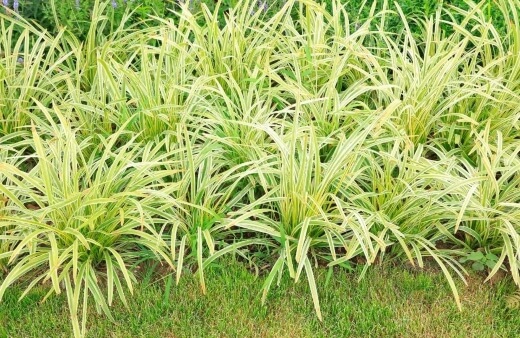
If you are growing mondo grass as a lawn, there is not much you need to do to maintain it. Remove any weeds as they pop up and keep the ground moist in the dry season.
If there are any ragged leaves after winter, you can trim them back. The great thing about this grass is that it creates a carpet of leaves which move in the wind.
Depending on the variety, the leaves grow from 5 to 40cm long and curve back toward the ground. This makes it look a bit like blades of turf grass. The plants spread via a network of rhizomes that grow just below the soil surface.
In spring, tiny white to lilac flowers appear among the leaves and these are followed by small bright blue berries. Mondo grass really is versatile and perfect for planting in moist soil next to water features and alongside streams and dams.
'Kyoto Dwarf' is a great groundcover and good for edging walkways and bordering flower beds. The tall varieties are often planted next to the foundations of buildings to create a softer look.
If the dwarf cultivars like 'Kyoto Dwarf' are planted abundantly, they make the perfect maintenance free lawn for small gardens. This grass is also useful to plant on slopes because the dense roots hold the ground really well and prevents water runoff.
Dwarf varieties are also excellent planted between paving slabs and stepping stones. They are used often in Japanese pebble gardens and for woodland and cottage gardens.
Maybe you feel inspired to create some geometric layouts and tropical schemes. This grass is virtually pest free and it’s low-maintenance, so if you’re a gardener with limited time, this is the plant for you.
Mondo Grass Propagation
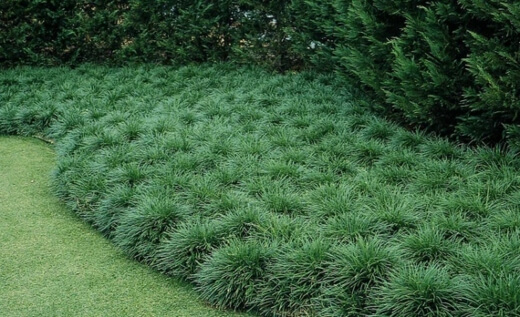
Source: etsy.com
Mondo grass is very easy to propagate by lifting and dividing the clumps. You can separate clumps into sections, each with several stolons, and plant them 10-31 cm apart depending on how quickly you want to fill up the area.
Dwarf mondo should be planted 5-10 cm apart. Cover the roots and stolons with loose soil but don’t cover the crown of the plant. You also want to keep the soil evenly moist while the new plant becomes established.
You need to divide the fibrous roots in spring. Start by prying the plant clumps from the ground with a garden fork, and then use your hands to break apart groups of roots.
Divide them into sections and make sure each contains a few leaves. You might need to use a knife if the roots are thickly entwined. Cut away any dried or diseased parts of the roots and replant the clumps 10cm apart in the garden.
If you can’t plant it immediately, keep them moist until you can plant them.
Have a look at our articles on Lawn and Grasses for more information and inspiration on all things grass related.
Caring for Mondo Grass
Mondo grass care is minimal, but you do need to choose the right spot and prepare correctly for best results. The plants are light green in full sun but deeper green in shade.
Both locations work well as long as the soil is well draining and free from weeds.

Climate Preference
This grass is good for all climates. They will grow more abundantly in warmer regions if they are planted in light to deep shade. It grows easily throughout the country and is hardy to frost.
The plant will struggle in very hot dry regions unless watered regularly and planted in semi-shade. Strong winds have no effect on these plants and you can walk over them without causing too much damage.
If planted in place of lawn grass you don’t need to use a lawnmower for maintenance. All you need to do is some dividing every few years.
Sunlight Requirements
Full sun to deep shade is the range of light that the mondo grass can grow in.
Soil Suitable for Mondo Grass
Any soil type is suitable to grow this grass, as long as compost has been worked into it and it needs to be well-draining. The plant prefers light (sandy) to medium (loamy) soils, but will adapt to most well-drained soils, including clay.
Watering Schedule
Mondo grass needs to be watered regularly and deeply. Twice a week in summer will be more than enough, unless it is excessively hot. Keep the soil moist.
Outdoor mondo grass needs moist soil in its first growing season. This helps it establish a root system. You can water once a week if there is no natural rainfall. Keep indoor plants regularly watered.
Indoor mondo grass usually gets less sunlight and therefore needs less water in most cases. Just make sure the soil doesn’t dry out.
What Fertiliser to Use
Adding compost and bone meal to the soil when planting should be enough to keep this grass happy. You can also fertilise in early spring, using a fertiliser that is rich in nitrogen. A diluted grass feed is perfect.
Pruning Mondo Grass
Prune your grass annually. Trim back dead foliage in the early spring to allow for new growth and add mulch to retain water if needed. Divide clumps every three years if they are grown as standalone plants.
Check out our review of the best pruning shears in Australia.
Mondo Grass Possible Pests and Diseases
Snails and slugs might be a problem, along with scale. Disease issues are fungal and form during wet, warm periods. Serious damage by any of these isn’t something you need to worry about.
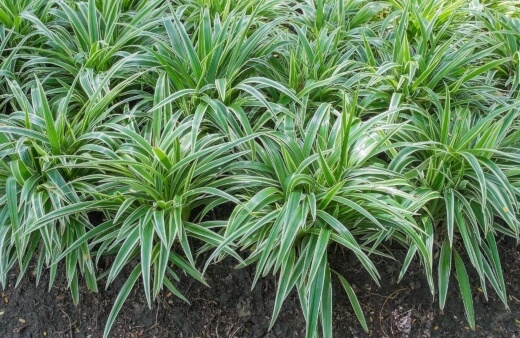
Root Rot
If you notice that your mondo grass has discoloration, it could be root rot. This grass is resilient to many pests and diseases, but leaving the roots in soggy soil will cause root rot in all varieties.
This grass does not like to have wet feet as we like to call it and the roots will start to perish if they have constant contact with water. It’s always best to let the grass dry out between watering sessions.
Symptoms of root rot include leaf-tip burn which turns the blades of grass a yellow or brownish colour. You’ll need to use a fungicide to treat root rot effectively. Make sure you wait for dry weather and then spray the fungicide all over the grass.
You can also help to curb root rot by mulching fertiliser into the roots of your plants. Compost contains microorganisms that kill the invading pathogens and restore the roots to normal and healthy levels.
Work the compost into the ground around the base of the grass to a depth of about 2.5 cm. The mondo grass should be able to recover slowly over about a month.
If the disease progresses, you may have to pull the grass. The pathogens also overwinter in the soil and can affect other nearby plants.
Snails and Slugs
Snails and slugs love to feed on mondo grass and you might notice signs of the grass dying. The pests cause the leaves to wilt. You can use a snail and slug bait from your local nursery.
Snails and slugs love coming out after the rain, so keep an extra watchful eye after wet weather. Go through your mondo grass and look for slugs and snails.
Remove any visible slugs and snails before leaving the bait around the base of the plant. You don’t have to worry about the pesticide harming other plants or local wildlife.
The toxin in the bait is only active with repeat feeding from the pests. The granules of snail bait contain ferric phosphate, which won’t harm your pets or the birds visiting your garden. As soon as the snails touch the bait, they stop feeding on the mondo grass.
Mondo Grass Frequently Asked Questions
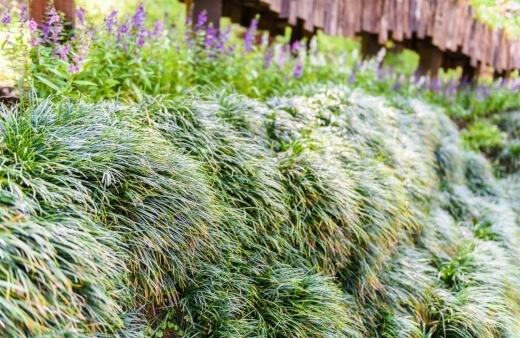
What’s the difference between Mondo and Monkey grass?
Monkey grass (Liriope) is also known by the common name lilyturf and is an ornamental grass that looks like mondo grass but is in fact a different species. Monkey grass grows in thicker clumps than mondo grass and has longer, wider blades.
Find out more about Liriope and how to grow them in Australia.
Does mondo grass have any interesting uses?
Mondo grass is used in traditional Chinese medicine.
Is mondo grass actually grass?
Although some people think Mondo grass is a type of grass, it is actually a type of lily.
What else is the mondo grass plant called?
Mondo grass is also known as fountain plant, monkey grass, dragon’s beard and snake’s beard.
Is mondo grass considered invasive?
In some parts of the world like the Southern USA, this grass flourishes so well because of the warm humidity and can become invasive in these kinds of conditions.
What are good companion plants for mondo grass?
Loosestrife, Japanese painted fern and astilbe.
Not convinced about what type of lawn to grow or looking to add more ground greenery to your garden? Check out our article on grass types in Australia and pick the best type of turf to help you decide.
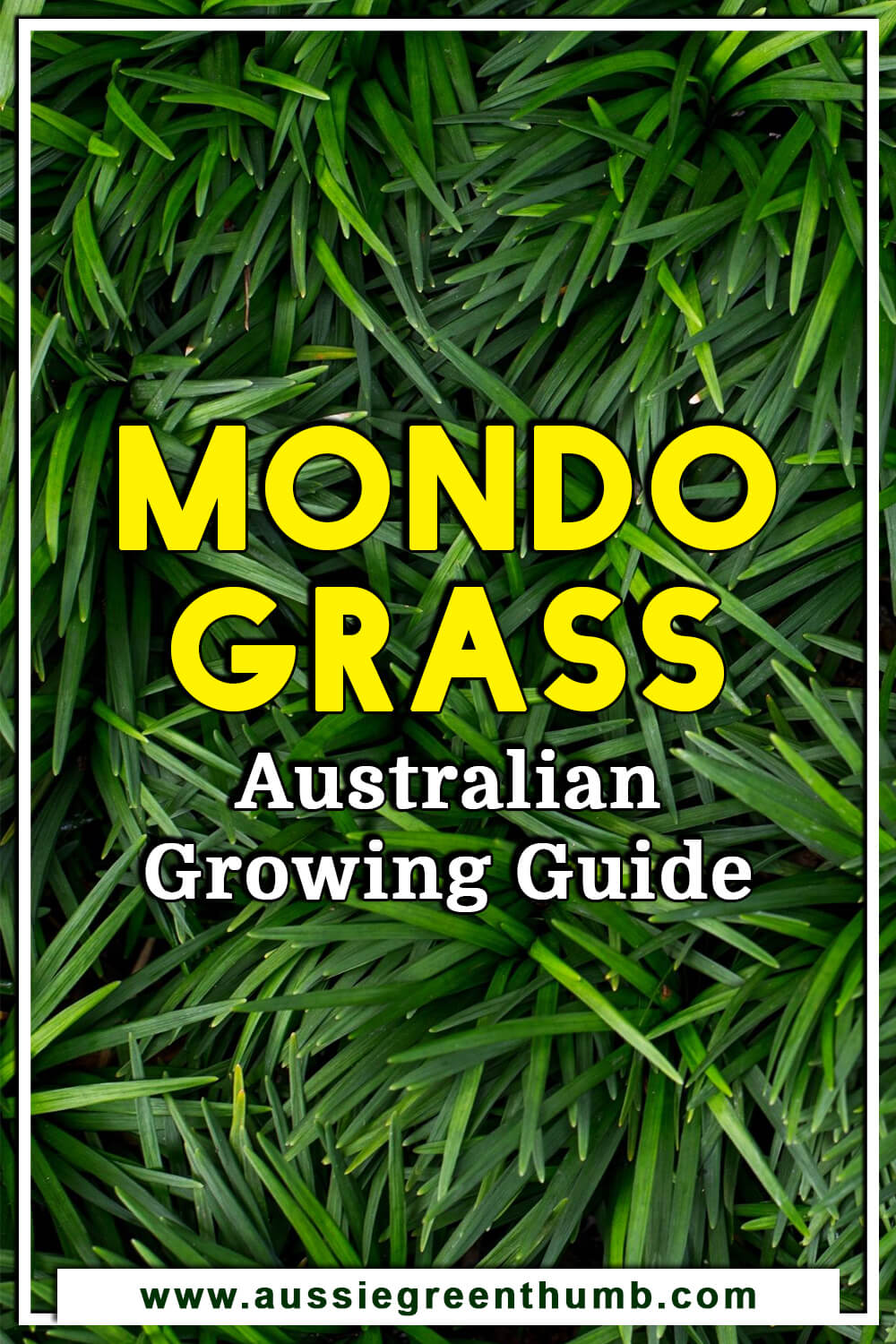
Wrapping Up Our Mondo Grass Growing and Care Guide
The calming effect of mondo grass makes it the ideal filler around accent plants and they are just as charming as border plants in the front of flower beds. It’s no wonder that in Eastern or Zen gardens the dwarf forms of mondo grass have reached icon status.
This grass is at home in low maintenance gardens with large paved areas and the perfect alternative to a thirsty traditional lawn. We’re giving mondo grass our green thumbs up!
Published on June 29, 2022 by Maisie Blevins
Last Updated on September 20, 2024




